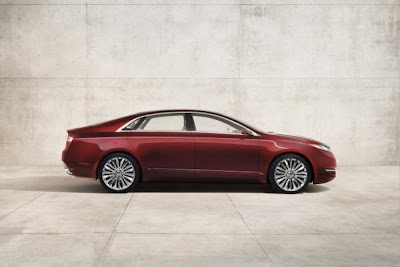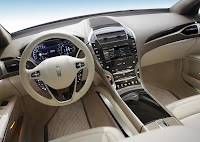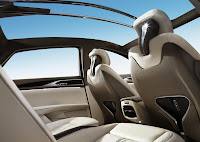Lincoln MKZ Concept
With Mercury gone, Ford now only needs to concentrate its efforts on one other brand: the somewhat moribund Lincoln.
But it appears that serious work is being put into rebuilding the marque, which is understandable considering that the luxury segment in the United States accounts for over ten per cent of sales. Over the past year or so a dedicated team has been formed, and in 2011 the Lincoln Design Studio opened.
One of the first products of the new facility is the MKZ Concept, which has been unveiled at the North American International Auto Show in Detroit.
Based on a new mid-size platform that can accommodate front- or all-wheel drive set-ups, the concept hints at a production model that should go on sale later this year.
Its significance shouldn’t be underestimated. As Derrick Kuzak, Ford Motor Company group vice president for Global Product Development, said, “With the Lincoln MKZ Concept, we are not introducing a new car. We are essentially introducing a new brand. The MKZ Concept is the next step in the reinvention of Lincoln, something we’ve been quietly but aggressively pursuing.”
The styling gives a clue to what all future Lincoln vehicles will look like, and is described as ‘elegant simplicity’ by Max Wolff, Lincoln design director. It looks agreeably distinctive, cleverly combining traditional elements such as the split-wing grille with a novel fastback silhouette.
Certain features such as the panoramic glass roof probably won’t make it to production, but at least Lincoln has demonstrated some original thinking. If anything, the MKZ Concept has an almost Gallic air; it could quite easily wear a Citroën or Renault badge.
Although the interior of the concept is only a four-seater, the emphasis is on light and space, something that’s helped by the pale champagne-coloured leather seats. But technology abounds too, and in place of conventional instruments there’s a 10.1” LCD screen directly ahead of the driver.
Doubtless Lincoln will be keen to gauge public reaction to the MKZ Concept, as that should indicate whether its renaissance strategy is likely to succeed or not.
But it appears that serious work is being put into rebuilding the marque, which is understandable considering that the luxury segment in the United States accounts for over ten per cent of sales. Over the past year or so a dedicated team has been formed, and in 2011 the Lincoln Design Studio opened.
One of the first products of the new facility is the MKZ Concept, which has been unveiled at the North American International Auto Show in Detroit.
 |
| Lincoln MKZ Concept. Scroll down for more images. |
Based on a new mid-size platform that can accommodate front- or all-wheel drive set-ups, the concept hints at a production model that should go on sale later this year.
Its significance shouldn’t be underestimated. As Derrick Kuzak, Ford Motor Company group vice president for Global Product Development, said, “With the Lincoln MKZ Concept, we are not introducing a new car. We are essentially introducing a new brand. The MKZ Concept is the next step in the reinvention of Lincoln, something we’ve been quietly but aggressively pursuing.”
The styling gives a clue to what all future Lincoln vehicles will look like, and is described as ‘elegant simplicity’ by Max Wolff, Lincoln design director. It looks agreeably distinctive, cleverly combining traditional elements such as the split-wing grille with a novel fastback silhouette.
Certain features such as the panoramic glass roof probably won’t make it to production, but at least Lincoln has demonstrated some original thinking. If anything, the MKZ Concept has an almost Gallic air; it could quite easily wear a Citroën or Renault badge.
Although the interior of the concept is only a four-seater, the emphasis is on light and space, something that’s helped by the pale champagne-coloured leather seats. But technology abounds too, and in place of conventional instruments there’s a 10.1” LCD screen directly ahead of the driver.
Doubtless Lincoln will be keen to gauge public reaction to the MKZ Concept, as that should indicate whether its renaissance strategy is likely to succeed or not.









%2BFront%2BSide.jpg)



%20Front%20Side%201.jpg)
Comments
Post a Comment